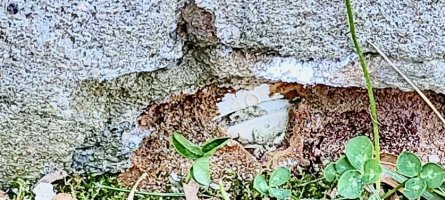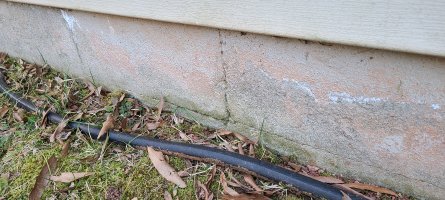Hi All,
Trying to get some points of view on a family member's home. There appears to be what is efflorescence on one side of the foundation slab. For context, the home is nearly 20 years old, clay soil, and on a concrete slab.
One side has always had the white marks on the side of the foundation wall. I walked around the neighborhood and pretty much every single home has the same thing. Is this "normal" in this case or does it imply that every home in the community has a moisture or other problem? =) I went back to old pictures from nearly a decade ago and saw them on this home and neighbors homes as well.
The exterior slab looks to be in pretty good condition all the way around but on the side with the efflorescence there are some hairline vertical cracks every few feet in one section and a small horizontal crack that runs maybe 10 feet or so, right above the dirt line.
Does this sound normal for a home of this age and just cosmetic in nature, or could something else be going on here? Should these small cracks be parged and/or filled in some way or best to just leave it alone?
Thanks!
Trying to get some points of view on a family member's home. There appears to be what is efflorescence on one side of the foundation slab. For context, the home is nearly 20 years old, clay soil, and on a concrete slab.
One side has always had the white marks on the side of the foundation wall. I walked around the neighborhood and pretty much every single home has the same thing. Is this "normal" in this case or does it imply that every home in the community has a moisture or other problem? =) I went back to old pictures from nearly a decade ago and saw them on this home and neighbors homes as well.
The exterior slab looks to be in pretty good condition all the way around but on the side with the efflorescence there are some hairline vertical cracks every few feet in one section and a small horizontal crack that runs maybe 10 feet or so, right above the dirt line.
Does this sound normal for a home of this age and just cosmetic in nature, or could something else be going on here? Should these small cracks be parged and/or filled in some way or best to just leave it alone?
Thanks!




